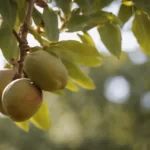Pepper plants are a popular choice for home gardens, valued for their flavorful fruits and relatively easy care. However, gardeners often encounter challenges with pepper plants that fail to grow as expected. Understanding the factors that affect the growth of pepper plants is crucial in diagnosing and resolving these issues.
Pepper Plant Growth Requirements
Pepper plants thrive under specific conditions, and any deviation from these can significantly impact their growth. They require full sunlight, warm temperatures, and well-draining soil with adequate nutrients. Pepper plants typically need a consistent temperature between 70°F and 85°F (21°C to 29°C) to grow optimally. They also require a balance of sunlight and moisture – too little or too much of either can stunt their growth.
Soil and Nutrition Issues
The quality of soil is a fundamental factor in the healthy growth of pepper plants. They flourish in well-draining soil rich in organic matter. If the soil is too dense, too sandy, or lacking in nutrients, the plants will not grow properly. Signs of nutrient deficiencies include yellowing leaves, stunted growth, and poor fruit development.
To address soil issues, consider incorporating organic compost into the planting area to improve soil structure and nutrient content. Regular application of a balanced, slow-release fertilizer can also promote healthy growth. It’s essential to ensure the soil pH is between 6.0 and 6.8, as this range allows optimal nutrient uptake for pepper plants.
Watering Problems
Both overwatering and underwatering can adversely affect pepper plants. Overwatering can lead to root rot and other fungal diseases, while underwatering can stress the plants, leading to wilted or drooping leaves and stunted growth.
Establishing an effective watering schedule is key. Pepper plants generally require about 1 to 2 inches of water per week, depending on the climate and soil type. It’s best to water deeply and less frequently to encourage strong root development. During hot weather or in sandy soils, more frequent watering may be necessary.
Temperature and Climate Factors
Temperature plays a critical role in the growth of pepper plants. They are particularly sensitive to both cold and extreme heat. If temperatures drop below 55°F (13°C), pepper plants may experience stunted growth, while prolonged exposure to temperatures above 90°F (32°C) can cause blossom drop and inhibit fruit set.
To mitigate temperature-related issues, consider planting peppers in a location that receives some afternoon shade, especially in regions with hot summers. In cooler climates, using row covers or planting in raised beds can help maintain a warmer microclimate. Timing your planting after the last frost date in spring and before the temperature drops in fall is also crucial.
Sunlight Exposure
Pepper plants require a minimum of 6 to 8 hours of direct sunlight per day for optimal growth. Insufficient sunlight can lead to leggy plants, weak stems, and poor fruiting.
If your garden area does not receive enough sunlight, consider relocating the plants to a sunnier spot. Alternatively, if you are growing peppers indoors or in a shaded area, supplementing with grow lights can help provide the necessary light exposure.
Pests and Diseases
Pests and diseases can significantly impact the growth and health of pepper plants. Common pests include aphids, spider mites, and whiteflies, which can weaken the plant by feeding on its sap. Diseases such as bacterial spot, powdery mildew, and root rot can also hinder plant growth.
Regular monitoring for signs of pests and diseases is vital. Implementing preventative measures, such as proper spacing for air circulation, avoiding overhead watering, and using organic or chemical treatments as necessary, can help manage these issues. Additionally, practicing crop rotation and maintaining good garden hygiene can prevent many pest and disease problems.
Transplant Shock and Root Problems
Transplant shock is a common issue when moving pepper plants from one location to another, including shifting from indoor pots to outdoor gardens. This stress can temporarily halt growth as the plant adjusts to its new environment. Symptoms include wilting, yellowing leaves, and stunted growth. To minimize transplant shock, gradually acclimate plants to outdoor conditions over a week, ensure proper planting depth, and water thoroughly after transplanting.
Root problems, such as damage or constriction, can also hinder growth. Ensure that pepper plants have enough space to grow their roots. If growing in containers, choose pots that are large enough to accommodate the plant’s root system without crowding. Additionally, avoid disturbing the roots during transplanting or cultivation.
Troubleshooting Tips
If your pepper plants are still struggling despite optimal care, consider the following troubleshooting tips:
- Perform a soil test to check for nutrient deficiencies.
- Adjust watering habits according to weather conditions and soil moisture levels.
- Examine plants regularly for signs of pests or diseases and address promptly.
- Use mulch to help maintain soil moisture and temperature.
Conclusion
Growing healthy pepper plants requires attention to several key factors, including appropriate soil, water, sunlight, temperature, and pest management. Understanding and addressing the specific needs of your pepper plants can lead to vigorous growth and a bountiful harvest. Remember, gardening is a learning experience filled with trial and error, so stay patient and observant. With time and care, you can overcome the challenges of growing peppers and enjoy the fruits of your labor.



